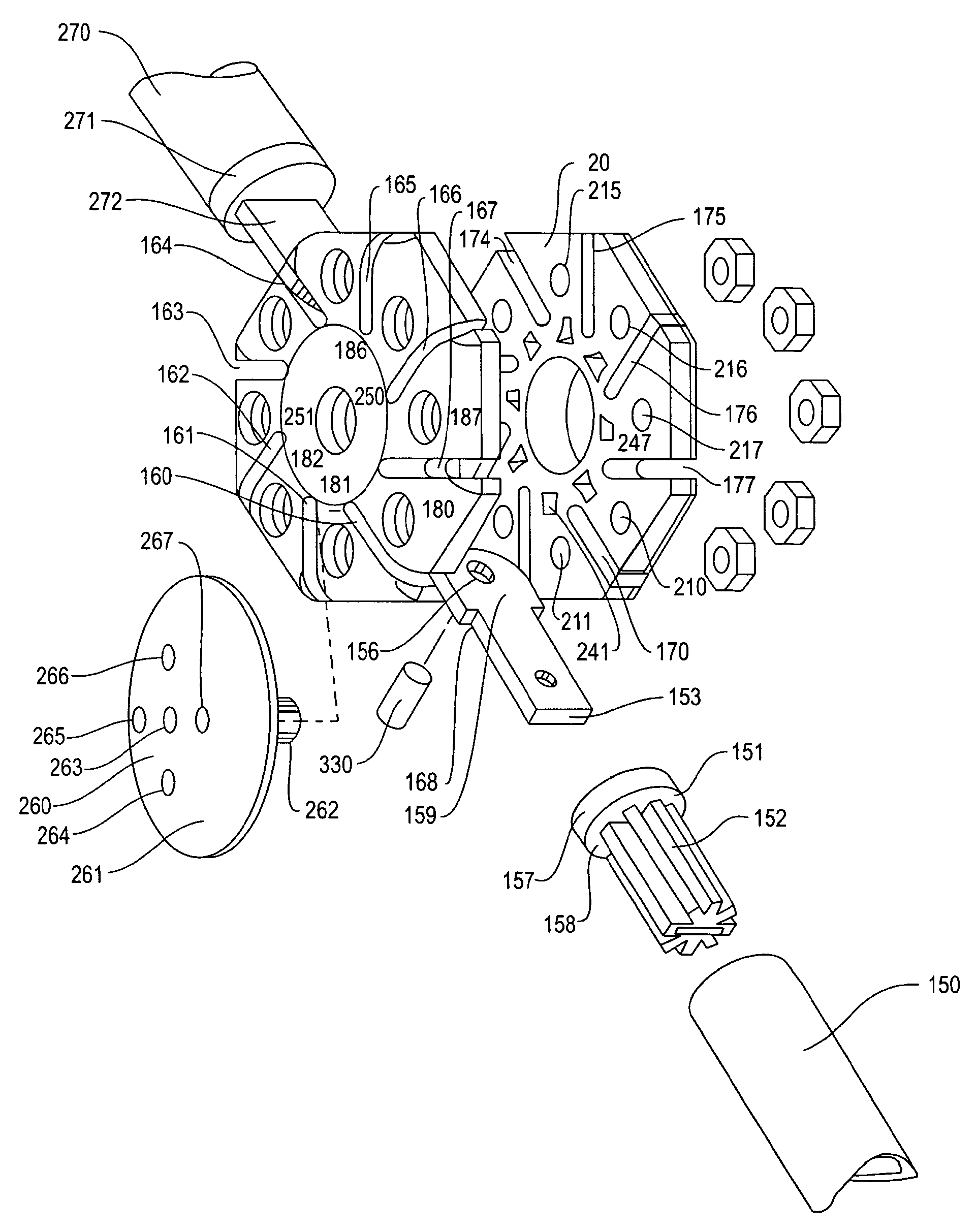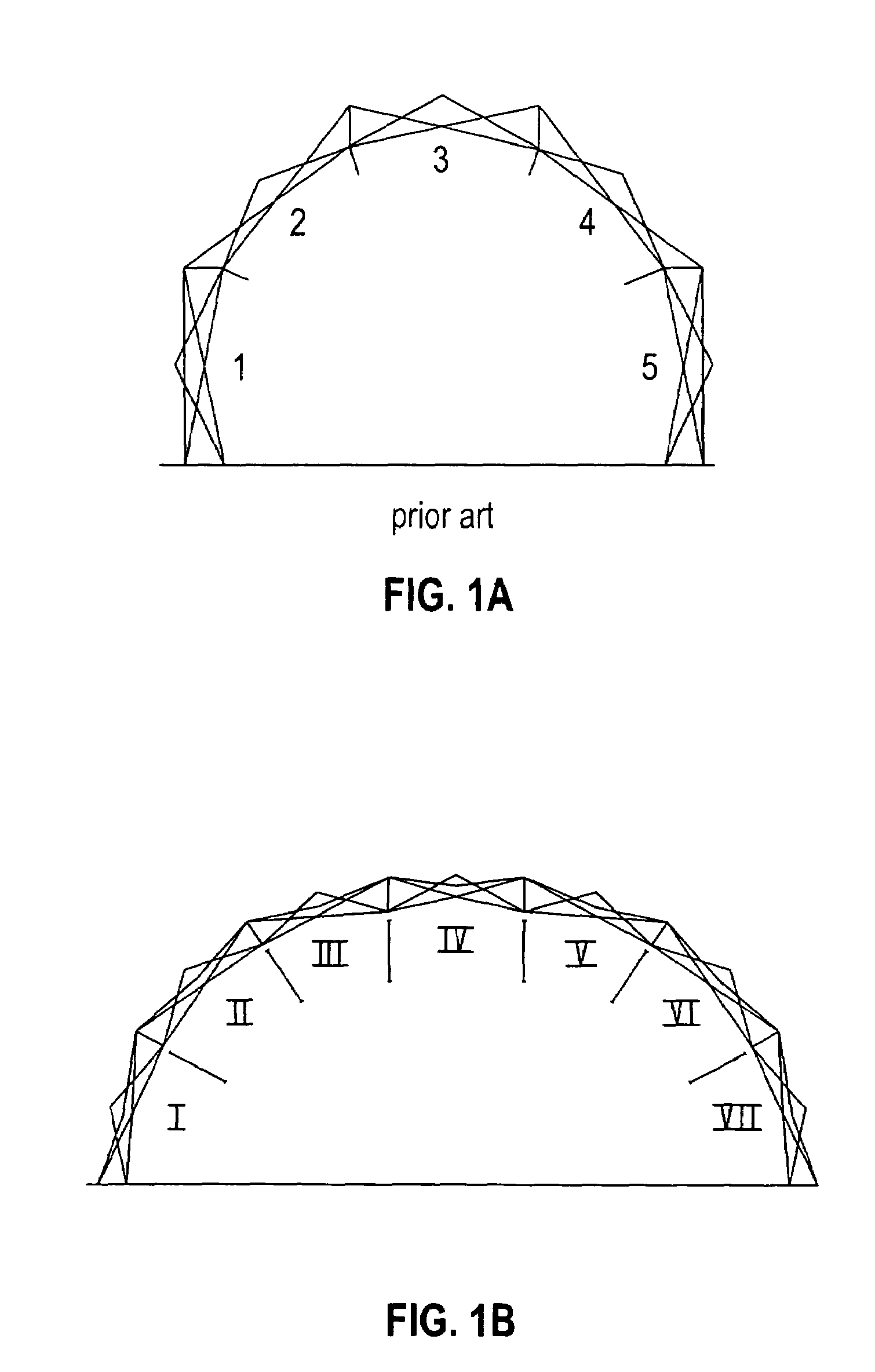Articulating hub assembly
a hub assembly and collapsible technology, applied in the direction of couplings, branching pipes, rod connections, etc., can solve the problems of not being easily replaced, not being able to easily interchange components, and typical prior art structures disclosed in the references cited above suffer from common problems
- Summary
- Abstract
- Description
- Claims
- Application Information
AI Technical Summary
Benefits of technology
Problems solved by technology
Method used
Image
Examples
Embodiment Construction
[0055]As noted above, the present invention relates to a deployable shelter and an articulating hub assembly which serves to connect tubular rods that comprise the basic construction elements for a prefabricated, self-supporting, deployable structure.
[0056]Tubular struts 150 and two hubs 8 and 9 of the present invention, with the tubular struts in their intermeshed orientations when the structure is in a folded state, are shown in FIG. 2. When viewing the hubs as depicted in FIG. 2, the “bottom” element, 10, of hub assembly 8, is shown connected to four tubular struts, and the “top” element, 11, of hub assembly 9 is shown also connected to four tubular struts. The tubular struts are connected to the hub by means of a plug 151 affixed within the interior of tubular strut 150. Plug 151 is connected to tang 154 which is held within the hub body 8. FIG. 2 shows only 7 struts for clarity.
[0057]FIG. 3 shows the “bottom”10 of hub assembly 8 of the present invention, with four tubular strut...
PUM
 Login to View More
Login to View More Abstract
Description
Claims
Application Information
 Login to View More
Login to View More - R&D
- Intellectual Property
- Life Sciences
- Materials
- Tech Scout
- Unparalleled Data Quality
- Higher Quality Content
- 60% Fewer Hallucinations
Browse by: Latest US Patents, China's latest patents, Technical Efficacy Thesaurus, Application Domain, Technology Topic, Popular Technical Reports.
© 2025 PatSnap. All rights reserved.Legal|Privacy policy|Modern Slavery Act Transparency Statement|Sitemap|About US| Contact US: help@patsnap.com



